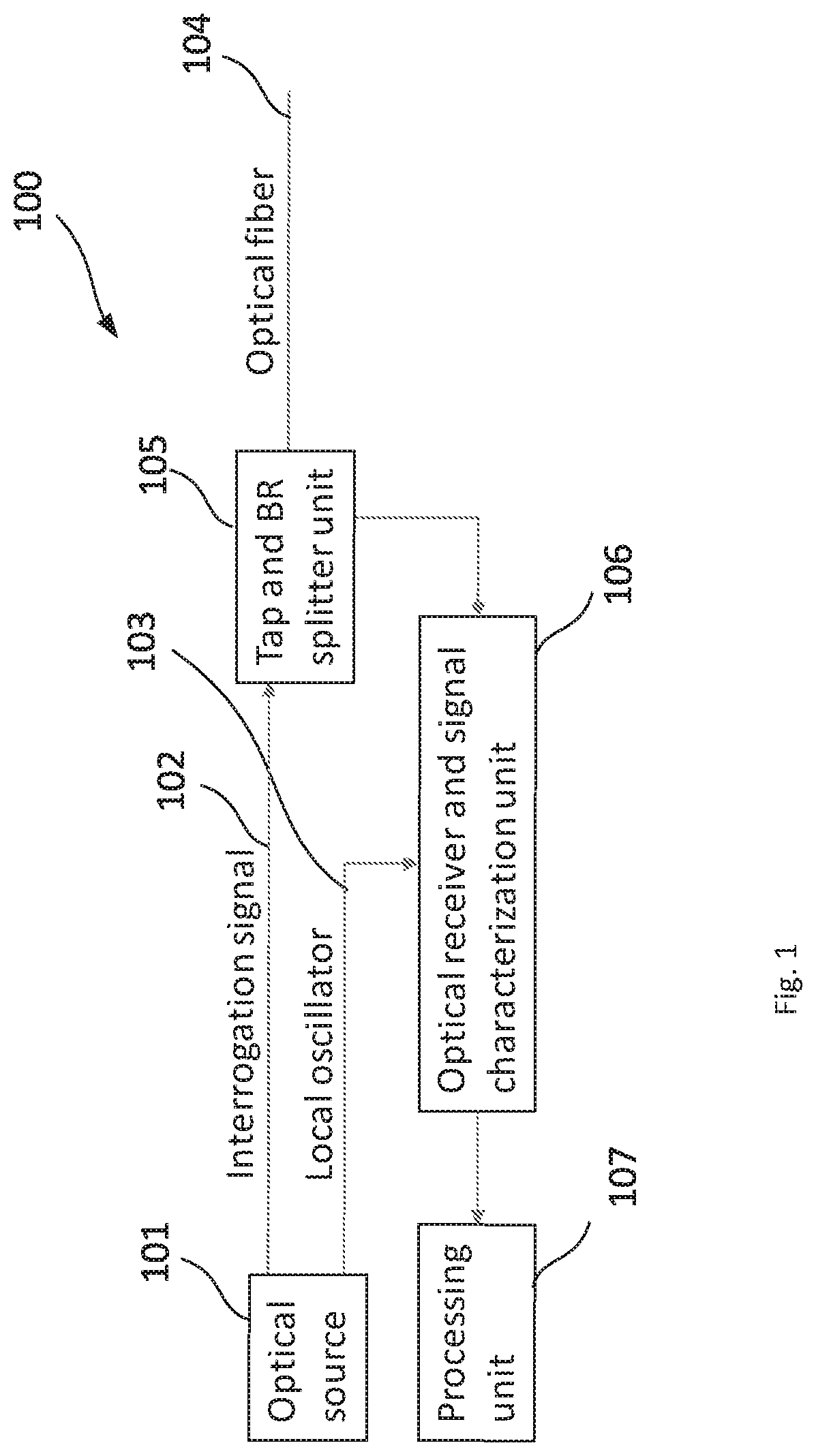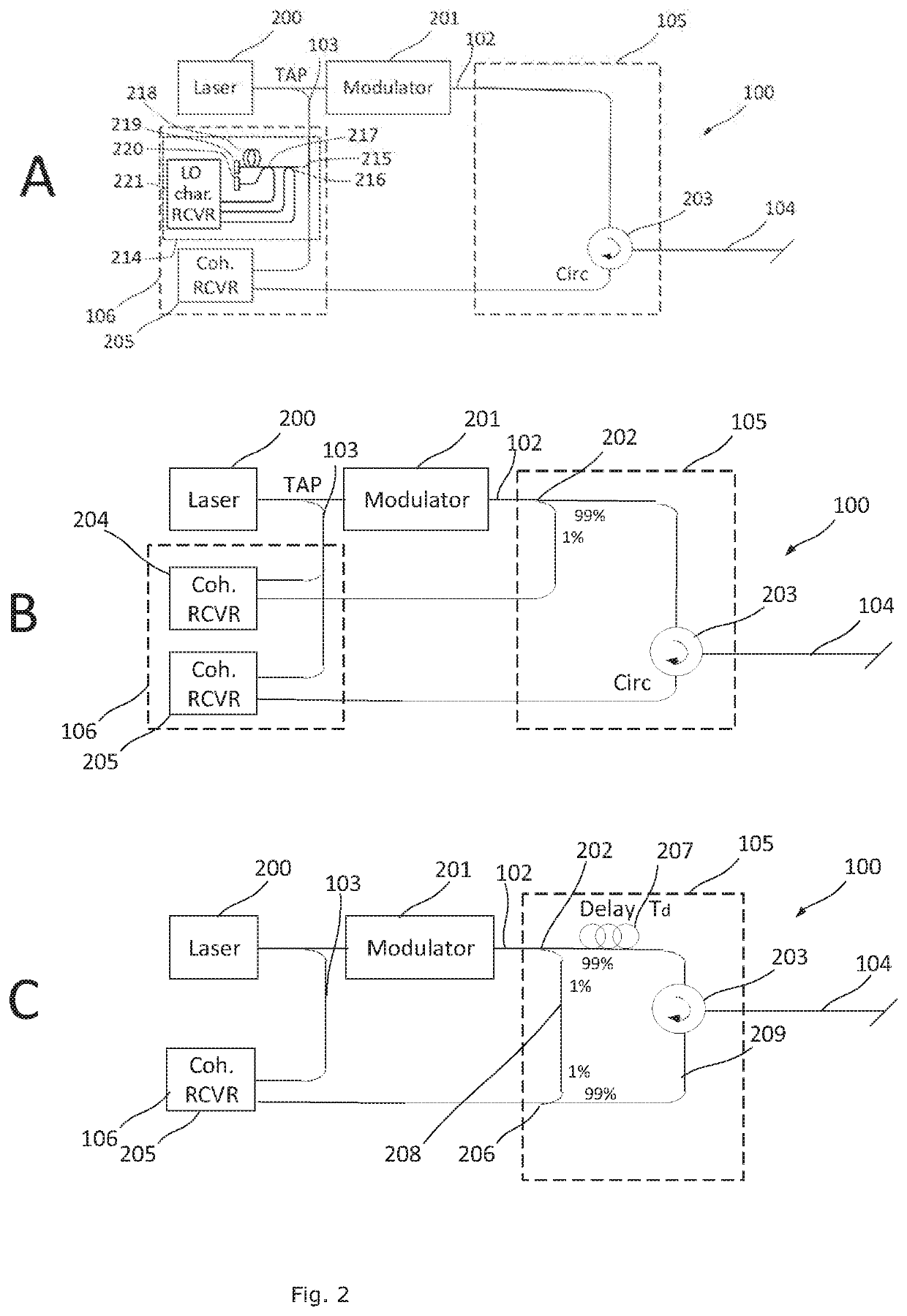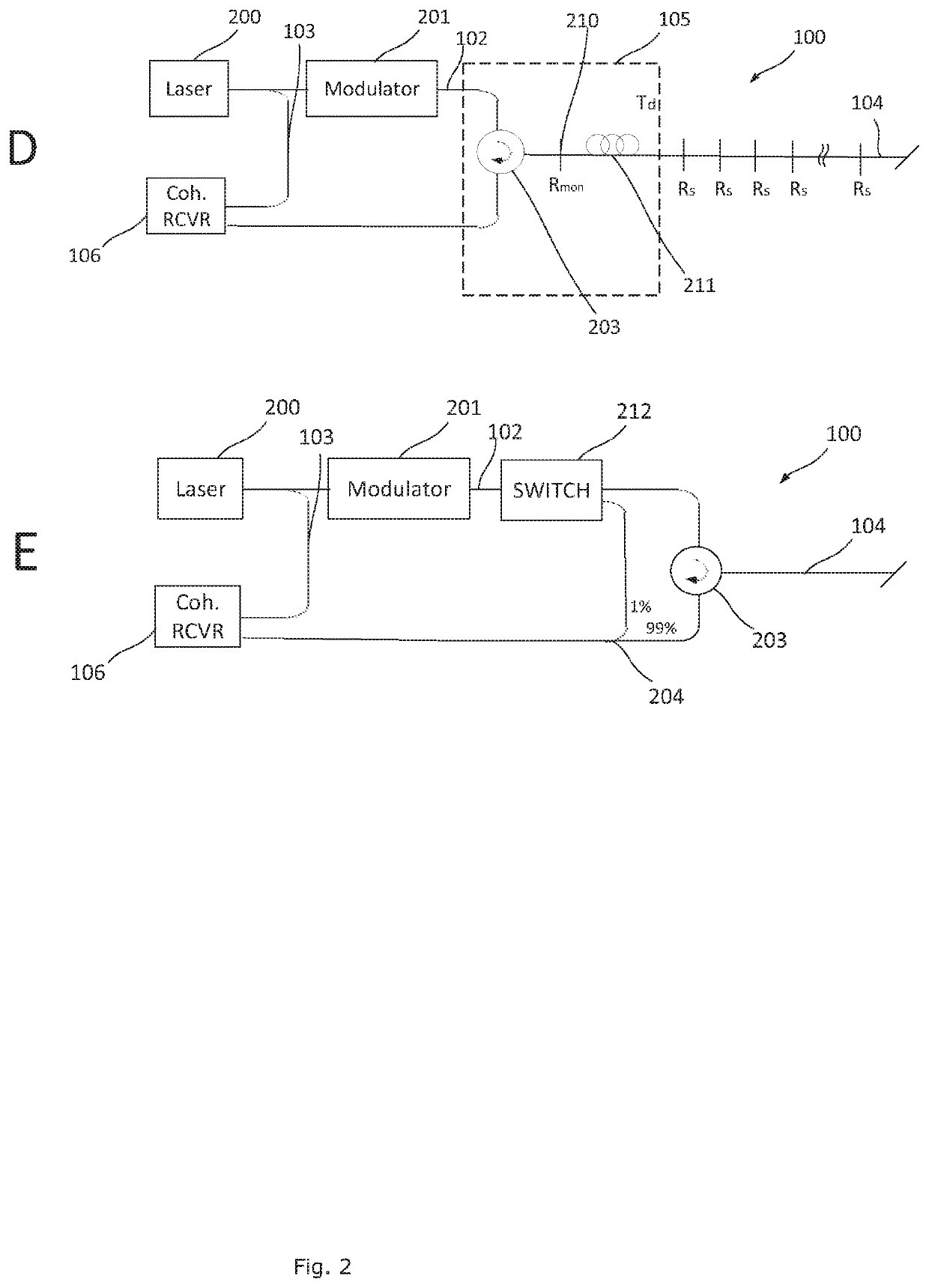Method and apparatus for suppression of noise due to transmitted signal instability in a coherent fiber optical sensor system
a fiber optic sensor and receiver technology, applied in the direction of converting sensor output optically, instruments, measurement devices, etc., can solve the problems of rayleigh backscattering, the duty cycle of interrogation signals, and the dominance of shot noise at the receiver, so as to suppress the noise induced by the transmitted signal
- Summary
- Abstract
- Description
- Claims
- Application Information
AI Technical Summary
Benefits of technology
Problems solved by technology
Method used
Image
Examples
Embodiment Construction
0 according to the invention, the system comprising an optical source 101 providing an interrogation signal 102 and an optical local oscillator 103. The optical local oscillator is directed to an optical receiver and signal characterization unit 106. The interrogation signal is being launched into the optical fiber 104 (called “sensor fiber” in the following) via a tap and backreflection unit 105. Note that the term “sensor fiber” here merely means the fiber to be interrogated, not necessarily that the fiber contains or forms sensors as such. For instance, in some embodiments, the sensor fiber may be a regular optical fiber, such as an SMF-28-type fiber. The interrogation signal 102 is launched into the sensor fiber 104 will be reflected from different sections of the sensor fiber and directed to the optical receiver and signal characterization unit 106 via the tap and backreflection unit 105. The optical receiver and signal characterization unit 106 mixes the reflected light with t...
PUM
 Login to view more
Login to view more Abstract
Description
Claims
Application Information
 Login to view more
Login to view more - R&D Engineer
- R&D Manager
- IP Professional
- Industry Leading Data Capabilities
- Powerful AI technology
- Patent DNA Extraction
Browse by: Latest US Patents, China's latest patents, Technical Efficacy Thesaurus, Application Domain, Technology Topic.
© 2024 PatSnap. All rights reserved.Legal|Privacy policy|Modern Slavery Act Transparency Statement|Sitemap



